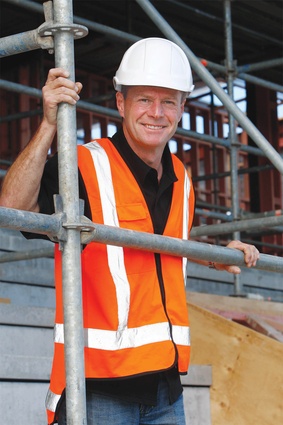Height of demand
Scaffolding Access and Rigging New Zealand’s new CEO, Chris Douglas, looks at the inherent challenges of an industry teetering on the edge of a growth phase
Over the last few months there has been an overall increase in activity around the country within the scaffolding industry. Mainly as a result of the government’s Preventing Falls from Height campaign, low-level scaffolding and roof edge protection have been high on the list of priorities – falls from three metres or less off roofs and from ladders account for most of the serious accidents in the construction sector in New Zealand. While the majority of businesses are making a concerted effort to comply with the regulations, there is still a long way to go before the message gets through to everyone.
And as the industry grows, safety remains paramount. A developing risk factor is the introduction of innovative new products to the market place. While some of these new products are examples of great Kiwi ingenuity, products continue to crop up that look like they have been produced in somebody’s back shed. These types of products represent a ticking time bomb. Unless products comply with the Australian and New Zealand standards, they are an accident waiting to happen.
The Ministry of Business, Innovation and Employment is currently working with importers and manufacturers on product recalls, technical information, and training guidelines to reduce risks surrounding faulty or non-compliant product use. While compliance is vital, so is installation training.
Even if a product complies with the relevant standards, with the influx of new safety systems available to roofers, builders, painters and associated trades, there seems to be a lack of investment in installation training. In an effort to enhance safety by installing new systems, more risks can easily be created as a result of incorrect or incomplete installation. If workers are not equipped with the correct training, there are numerous organisations around the country offering a range of relevant courses.
Training staff is a high priority for the scaffolding industry as demand for skilled workers from Christchurch and the general construction market increases. To completely train a scaffolder to NZQA Level 5 takes about three years.
Therefore, businesses in the current market need to be proactive and anticipate future staffing needs, identify candidates with potential, and organize training as soon as possible if we, as an industry, are to meet future demand. In a step to spark interest in the industry, Scaffolding Access and Rigging New Zealand (SARNZ) recently sent out a promotional DVD explaining career options to all schools, as well as Work and Income New Zealand offices, and training organisations. It was well received and SARNZ has since recorded a marked increase in the number of inquiries about apprenticeships and training.
To meet future need, we need to act now, to recruit and train the industry’s future staff. At the end of October a collaboration between Whangarei’s North Tech and Tai Poutini Polytechnic resulted in the launch of a pilot eight-week training programme designed as a pre-employment course to prepare young people for a career in the scaffolding and rigging industry.
The pilot course will provide employers with students who are well on the way to sitting an elementary scaffolding qualification, and people who have a basic knowledge of hazard control, planning, working at height, use of hand tools, and roading transportation.
Courses such as this are a huge step in the right direction, providing a pathway into the industry, and assurance for employers that graduates have a basic knowledge on which to build. SARNZ is working closely with training providers, schools and associations around the country to develop initiatives aimed at boosting recruitment into the industry to ensure it is well prepared for the increased demand and challenges that lie ahead.










